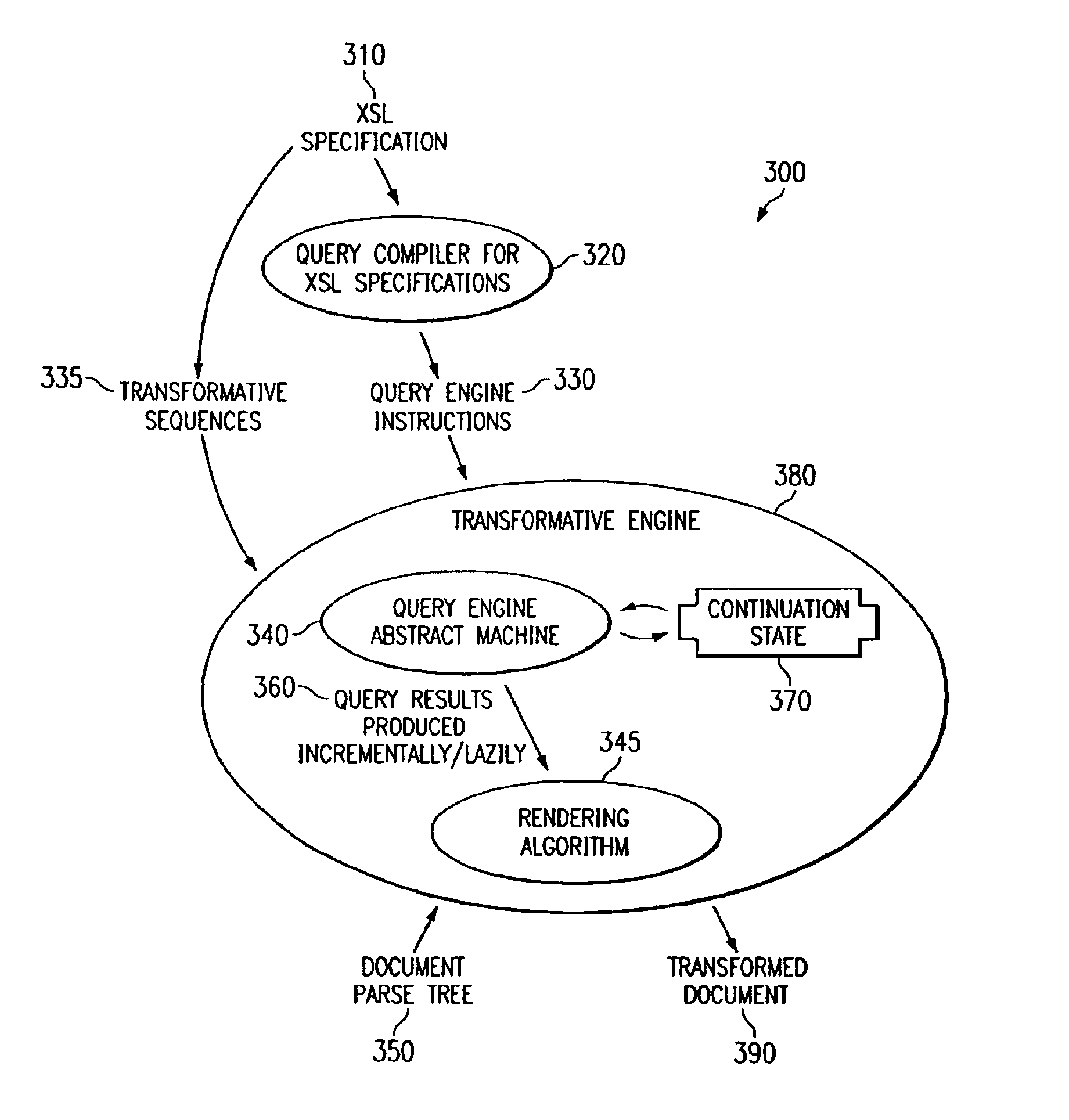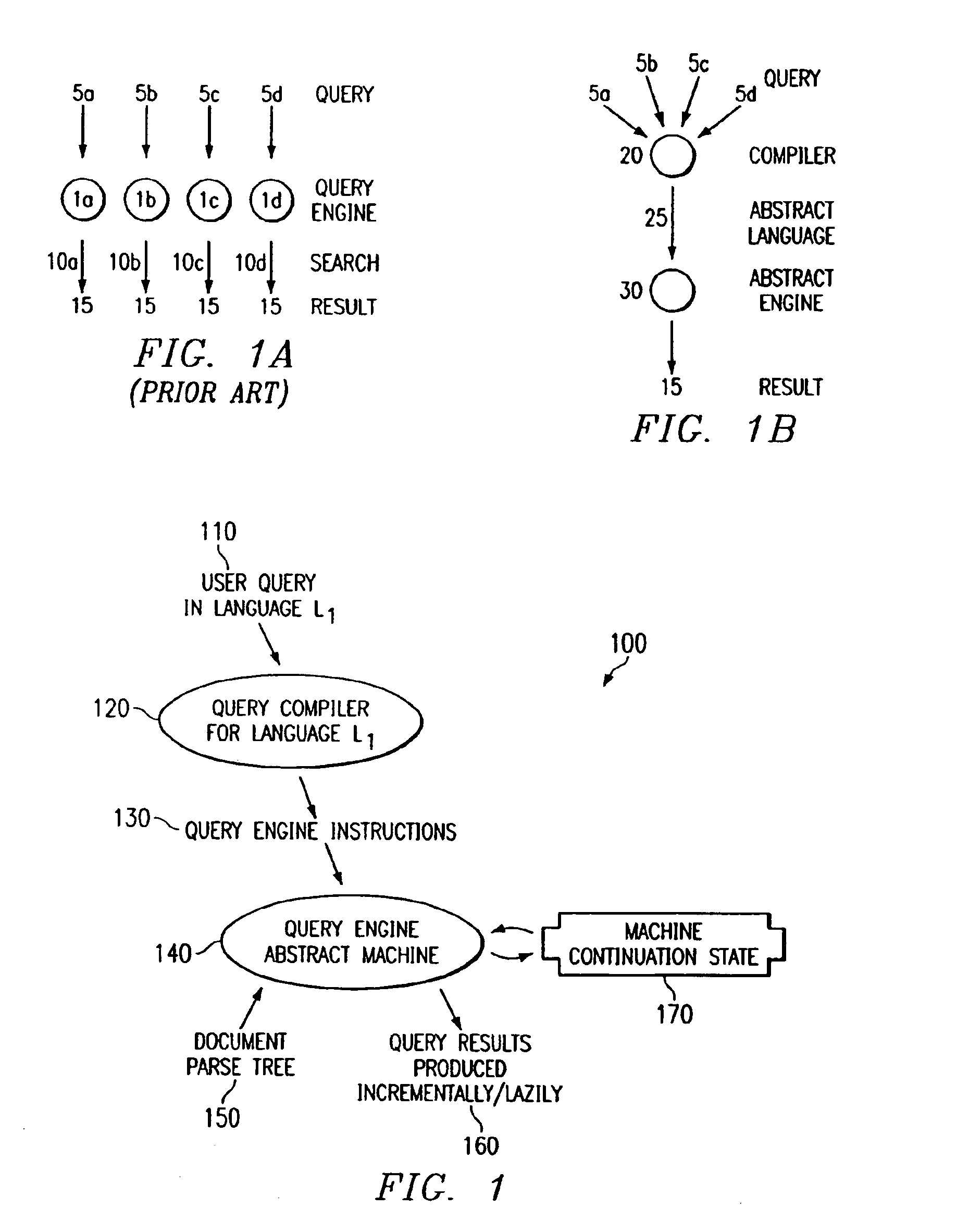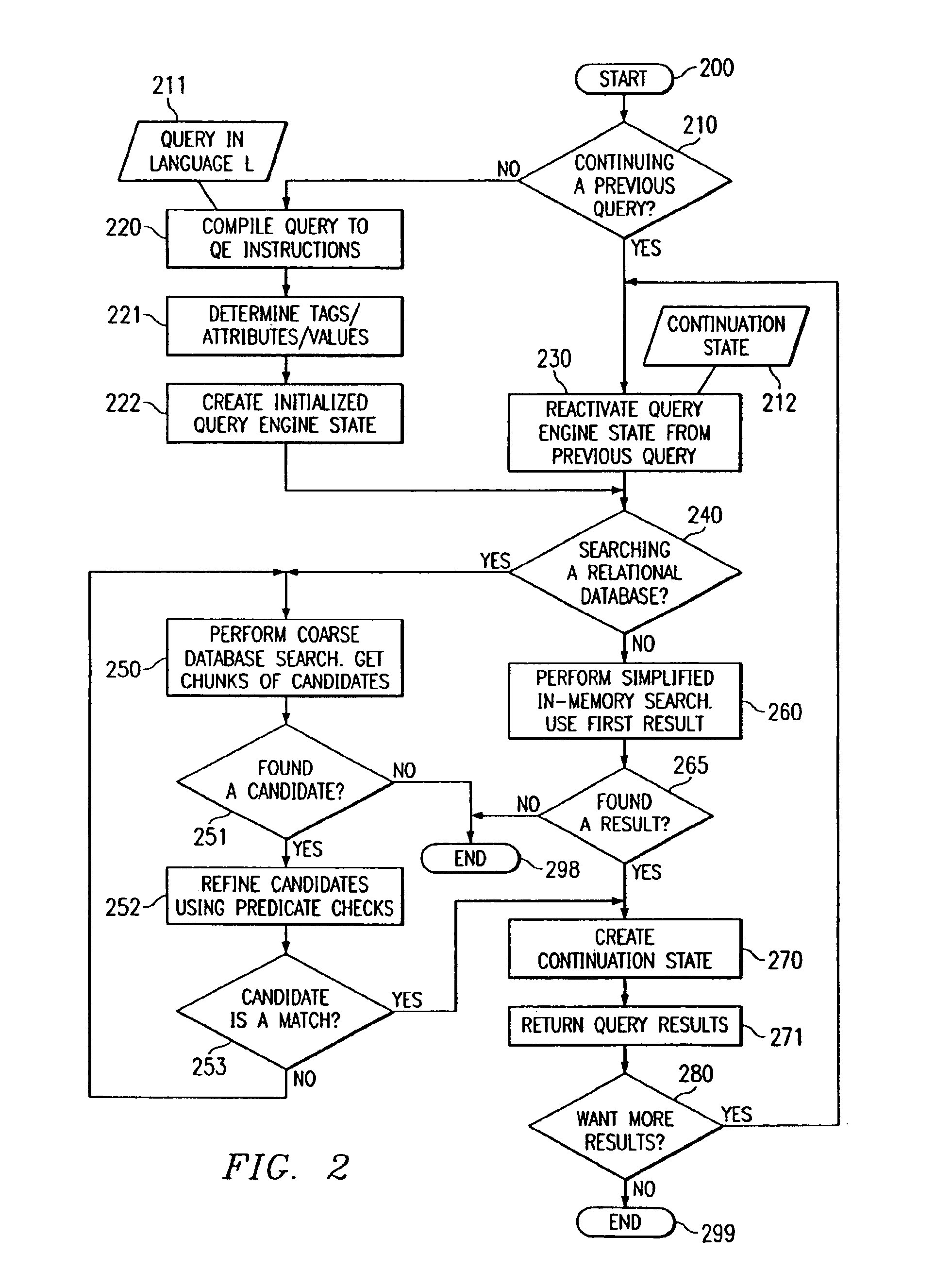Automatic query and transformative process
a transformative process and automatic query technology, applied in the field of information retrieval, can solve the problems of time and resource consumption, the search technique does not incorporate a transformative sequence for adjusting information, and the electronic information is increasingly displacing more conventional, so as to process the query and validate the results efficiently
- Summary
- Abstract
- Description
- Claims
- Application Information
AI Technical Summary
Benefits of technology
Problems solved by technology
Method used
Image
Examples
Embodiment Construction
[0028]In the context of an electronic environment, a document is stored using markup language. A markup language defines the descriptions of the structure and content of different types of electronic documents. There is a need to be able to search such electronic documents to obtained needed information. In the prior art, as shown in FIG. 1A, a single query engine would not be able to handle query requests in a number of differing languages. It would take a number of query engines 1a, 1b, 1c, and 1d receiving similar search requests, in a number of differing languages 5a, 5b, 5c and 5d, to compile and generate a number of differing searches, 10a, 10b, 10c, and 10d, in order obtain a search result 15. In an embodiment shown in FIG. 1B, compiler 20 may receive a number of similar search requests in a number of differing languages, 5a, 5b, 5c, and 5d. The compiler 20 compile the search request 20 from any of the languages into the abstract engine language 25 and then have the abstract ...
PUM
 Login to View More
Login to View More Abstract
Description
Claims
Application Information
 Login to View More
Login to View More - R&D
- Intellectual Property
- Life Sciences
- Materials
- Tech Scout
- Unparalleled Data Quality
- Higher Quality Content
- 60% Fewer Hallucinations
Browse by: Latest US Patents, China's latest patents, Technical Efficacy Thesaurus, Application Domain, Technology Topic, Popular Technical Reports.
© 2025 PatSnap. All rights reserved.Legal|Privacy policy|Modern Slavery Act Transparency Statement|Sitemap|About US| Contact US: help@patsnap.com



